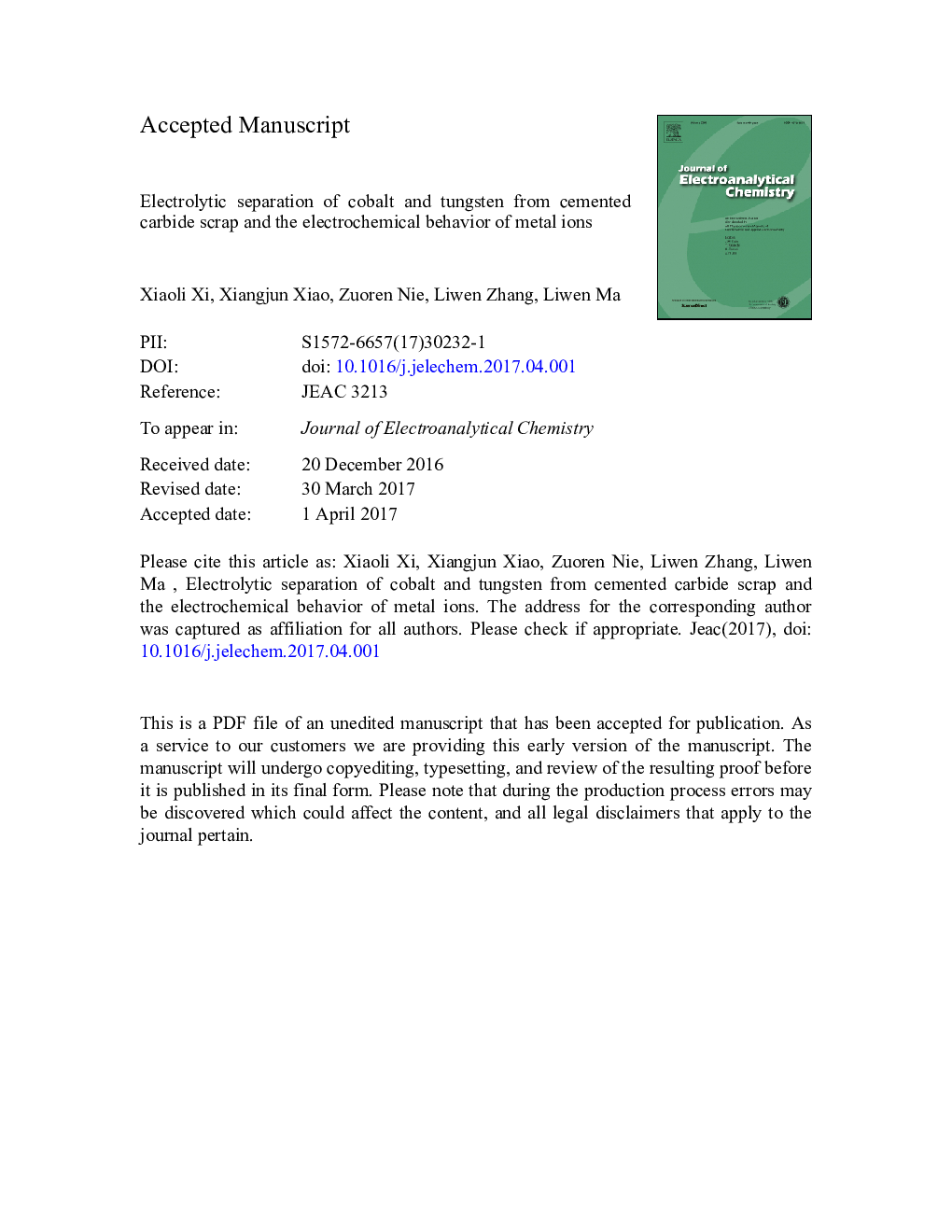| Article ID | Journal | Published Year | Pages | File Type |
|---|---|---|---|---|
| 4907878 | Journal of Electroanalytical Chemistry | 2017 | 43 Pages |
Abstract
Molten salt electrolysis is used to separate and recycling of elemental tungsten and cobalt from cemented carbides. WC-6 wt% Co scrap and NaCl-KCl molten salt was used as a sacrificial anode and electrolyte, respectively. The range of preparation parameters and the electrochemical behavior of tungsten and cobalt ions were investigated through electrochemical techniques, such as cyclic voltammetry (CV) and square wave voltammetry (SWV). Results showed that the dissolution potential of cobalt and WC were 0 V and 0.6 V (vs. Ag/AgCl), and the reduction potentials of Co (II) + 2eâ â Co (0) and W(II) + 2eâ â W (0) were â 0.2 and 0.2 V (vs. Ag/AgCl), respectively. The reduction processes of Co(II) to Co and W(II) to W were both reversible reactions controlled by ion diffusion. The average diffusion coefficients of Co(II) and W(II) were determined by CP to be 5.62 Ã 10â 5and 3.94 Ã 10â 5 cm2 sâ 1, respectively. Furthermore, the products at cathodes Nos. 1 and 2 were characterized by scanning electron microscopy, X-ray fluorescence and X-ray diffraction analyses. Results showed that pure cobalt and WC powder with a diameter of < 100 nm was obtained at cathode No. 1 and cathode No. 2. And the result of XRF shows that the purity of the products both Co and WC were higher than 90%. This study reveals that cobalt and tungsten can be separated from WC-6 wt% Co scrap by controlling process parameters during electrolysis.
Related Topics
Physical Sciences and Engineering
Chemical Engineering
Chemical Engineering (General)
Authors
Xiaoli Xi, Xiangjun Xiao, Zuoren Nie, Liwen Zhang, Liwen Ma,
